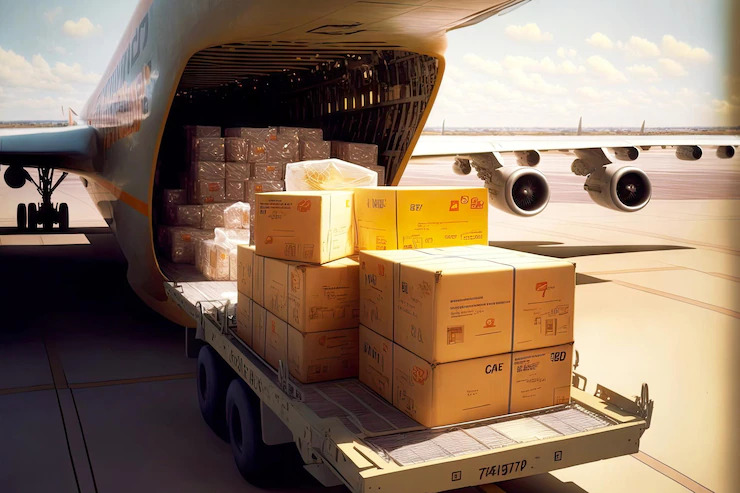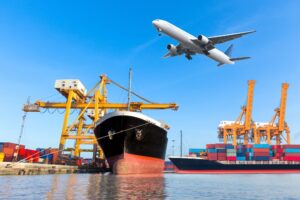RORO shipping, or Roll-On/Roll-Off shipping, is a widely-used method for transporting goods, including air cargo, from China to the United States. This shipping process involves loading the cargo onto specialized vessels or aircraft, where it is secured and transported to its destination. RORO shipping offers various benefits, such as ease of loading and unloading, cost-effectiveness, and reduced risk of damage. However, it also comes with its own set of requirements and considerations. In this article, we will delve into the process and requirements of RORO shipping for air cargo, providing valuable insights and guidance for businesses engaged in international trade between China and the USA.
What is RORO Shipping?

Picture this: your precious air cargo is securely packed, ready to embark on a journey from China to the USA. But how does it actually make its way across the vast ocean? Enter RORO shipping, a trusty method of transportation that stands for “Roll-On Roll-Off.”
RORO shipping involves loading and unloading cargo by means of driving it onto specialized vessels called RORO ships. These ships are equipped with ramps that allow vehicles and other cargo to be rolled directly on and off the ship. It’s like a real-life game of Tetris, but with a lot less stress and a lot more boards.
Advantages of RORO Shipping for Air Cargo
Now you might be wondering, why choose RORO shipping for air cargo? Well, there are some nifty advantages to consider. First and foremost, RORO shipping is a cost-effective option. By utilizing existing infrastructure and minimizing the need for additional handling, you can save some precious moolah in the process.
RORO shipping also offers efficiency and speed. With streamlined loading and unloading processes, your air cargo can get on its way quicker than you can say “freight forwarding.” Plus, RORO ships often have frequent departures, ensuring that your cargo can catch a ride when it needs to.
Key Considerations for RORO Shipping
While RORO shipping has its perks, it’s important to keep a few things in mind. For starters, RORO ships are primarily designed for vehicles, so if you’re shipping non-vehicle cargo, you’ll need to ensure it can be securely loaded and stored. It’s like playing garage Tetris but with non-garage items.
Additionally, RORO shipping doesn’t always offer the same level of protection as containerized shipping. Your cargo might be exposed to the elements during transit, so you’ll want to take precautions and pack it accordingly. Raincoats for your cargo, anyone?
2. Benefits and Limitations of RORO Shipping

The benefits of RORO shipping for air cargo are worth a good ol’ cheer. Firstly, it allows for the transportation of oversized or heavy cargo that may not fit in standard containers. Think of it as the VIP treatment for your extra-large goods.
RORO shipping also offers flexibility in terms of loading and unloading locations. Whether it’s the port of origin or the final destination, RORO ships can provide access to a variety of ports and terminals. It’s like having a chauffeur who can drop you off wherever you please (if the chauffeur were a massive sea vessel).
Limitations and Challenges of RORO Shipping
Like any relationship, RORO shipping does have its limitations. One major challenge is that RORO ships have a limited capacity for non-vehicle cargo. So, if you’re shipping a large quantity of non-vehicle items, you might need to explore alternative shipping methods. Sorry, Tetris fans, sometimes you need to switch to a different game.
Another limitation is the potential for damage or loss due to exposure to the elements during transit. While RORO ships do their best to protect cargo, Mother Nature can be a formidable opponent. So, it’s important to assess the risks and take appropriate precautions, like packing your cargo with a metaphorical umbrella.
3. Process and Documentation Requirements for RORO Shipping

Ah, the process of RORO shipping. It’s a journey within a journey. The process typically involves delivering your cargo to the port of origin, where it is inspected and loaded onto the RORO ship using its nifty ramps. Then, the ship sets sail across the ocean, and once it arrives at the port of destination, your cargo is safely rolled off the ship and ready for you to claim it. It’s like a thrilling rollercoaster ride, but with less screaming and more paperwork.
Essential Documents for RORO Shipping
Just like going on a rollercoaster requires a ticket, RORO shipping requires some essential documents. These typically include a bill of lading, commercial invoice, packing list, and any necessary permits or certificates. It’s like assembling a scrapbook of paperwork souvenirs from your cargo’s adventure.
Customs and Regulatory Requirements
Ah, customs and regulations, the ever-present party poopers. When it comes to RORO shipping, you’ll need to ensure compliance with both the customs requirements of the country of origin and the destination country. This may involve providing additional documentation, paying duties or taxes, or meeting specific regulatory standards. It’s like trying to impress a bouncer to get into an exclusive club, except the club is a different country.
4. RORO Shipping Routes from China to USA

So, you’re ready to embark on a RORO adventure from China to the USA. Well, you’ll be happy to know that there are several popular RORO shipping routes to choose from. These routes often include ports in China such as Shanghai, Tianjin, and Qingdao, connecting to various ports in the USA, such as Los Angeles, Long Beach, and New York. It’s like a choose-your-own-adventure story, but with sea voyages.
Frequency and Availability of RORO Services
When it comes to the frequency and availability of RORO services, you’re in luck. RORO ships often have regular departures, providing you with options to fit your specific timing needs. Just like catching a bus, but with a lot more open water.
So, there you have it, a crash course in RORO shipping for air cargo from China to the USA. Remember, RORO shipping offers a convenient and cost-effective way to transport your cargo, but it’s important to consider the unique requirements and potential challenges. Now go forth and let your air cargo embark on its RORO adventure! Just don’t forget to pack an imaginary raincoat.
5. Customs Clearance and Compliance for RORO Shipping

When it comes to RORO shipping for air cargo from China to the USA, customs clearance is an essential step in the process. It involves submitting necessary documentation and going through inspections to ensure compliance with import regulations. The customs clearance process can be time-consuming, so it’s important to allow for ample time to complete all the necessary procedures.
Import Duties and Taxes
One of the vital factors in customs clearance is understanding import duties and taxes. These charges are imposed by the destination country and can vary depending on the type of goods being shipped. It’s crucial to consider these costs when calculating the overall expenses of RORO shipping. Consulting with a customs broker or freight forwarder can help you navigate through the complexities of import duties and taxes.
Compliance with Import Regulations
Complying with import regulations is imperative to ensure a smooth customs clearance process. Each country has its own set of rules and restrictions, and it’s essential to research and understand them thoroughly. Failure to comply with these regulations can result in delays, penalties, or even the rejection of your cargo. To avoid potential complications, work closely with a knowledgeable shipping partner who can guide you through the compliance requirements.
6. Considerations for Packaging and Secure Transportation

Packaging plays a crucial role in protecting your cargo during RORO shipping. The cargo will be loaded and unloaded several times, so it’s essential to use robust and secure packaging materials. This will prevent damage from rough handling and ensure the items reach their destination in good condition. Consider using pallets, crates, and proper cushioning materials to protect your cargo from potential accidents or mishaps.
Secure Transportation Measures for Air Cargo
To minimize the risk of theft or damage, secure transportation measures are vital in RORO shipping. It’s important to choose a reputable shipping provider that has proper security protocols in place. This may include GPS tracking, sealed containers, and trained staff who handle the cargo with care. Additionally, ensure the transportation vehicles are well-maintained, properly secured, and equipped to handle air cargo requirements.
Preventing Damage and Loss during RORO Shipping
While accidents can happen, there are steps you can take to prevent damage and loss during RORO shipping. Apart from proper packaging, ensure that your cargo is adequately labeled with handling instructions and fragile markings, if applicable. Providing detailed packing lists and having proper insurance coverage for your goods can also help mitigate risks. Additionally, communicate with your shipping provider to address any concerns or specific instructions regarding the handling of your cargo.
7. Cost Factors and Pricing Structure of RORO Shipping

Several factors influence the overall cost of RORO shipping. Distance, weight, dimensions, and the urgency of delivery are some of the primary factors considered. Additionally, any specialized handling requirements or extra services, such as customs clearance assistance or insurance, can impact the total cost. It’s crucial to discuss these factors with your shipping provider to get an accurate estimate of the expenses involved.
Pricing Structure and Additional Fees
Regarding the pricing structure, RORO shipping often involves a combination of fixed costs and variable costs. Fixed costs may include base transportation charges, handling fees, and documentation charges. Variable costs depend on specific factors such as weight, volume, or extra services required. Additionally, it is important to be aware of any potential additional fees, such as customs duties or taxes, that may be incurred during the shipping process.
Comparing RORO Shipping Costs with Other Transport Modes
It’s essential to consider the cost of RORO shipping in comparison to other transport modes. While RORO shipping may be more cost-effective for certain types of cargo, it may not always be the most economical choice. Factors such as time constraints, cargo volume, and destination may make other transport modes, such as air freight or sea freight, more suitable and cost-efficient. It’s advisable to evaluate the pros and cons of each option and consult with shipping experts to make an informed decision.
8. Tips and Best Practices for Successful RORO Shipping

Choosing a reliable RORO shipping provider is crucial for a successful shipping experience. Research the reputation and track record of potential providers to ensure they have a good standing in the industry. Consider their expertise in handling air cargo and their knowledge of the specific trade routes you require. Reading customer reviews and seeking recommendations can also help you make an informed decision.
Preparing Documentation and Compliance Requirements in Advance
To avoid last-minute hiccups, it’s essential to prepare all required documentation and comply with import regulations well in advance. This includes providing accurate shipping invoices, packing lists, and any necessary permits or licenses. Being proactive in the documentation process can help prevent delays and expedite customs clearance.
Ensuring Proper Packaging and Labeling
Proper packaging and labeling are critical to safeguard your cargo during RORO shipping. Ensure that your cargo is well-packaged using suitable materials and labeled appropriately. Clear instructions on handling and any special requirements should be clearly visible. This will help minimize the risk of damage and ensure smooth handling throughout the shipping journey.In conclusion, understanding the process and requirements of RORO shipping for air cargo is vital for businesses involved in international trade between China and the USA. By familiarizing oneself with the benefits, limitations, documentation requirements, shipping routes, customs clearance procedures, packaging considerations, cost factors, and best practices, companies can ensure a smooth and successful RORO shipping experience. By leveraging the efficiency and convenience of RORO shipping, businesses can enhance their supply chain operations, optimize transportation costs, and deliver goods reliably to their US customers.




